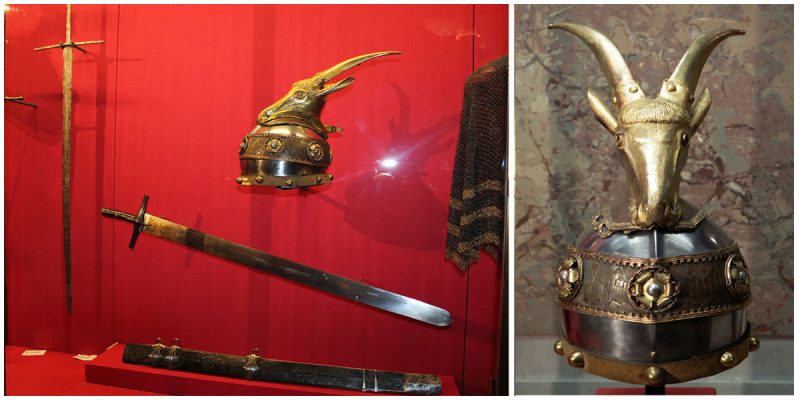George Kastrioti Skanderbeg is an Albanian national hero who served the Ottoman empire, the Republic of Venice, and the Kingdom of Naples. He is best known for leading a rebellion against the Ottoman empire in Albania after he left the Ottoman service.
There are a lot of legends about his bravery and his weapons. Only four objects remained from all of his belongings, including a helmet, a prayer book, and two swords.
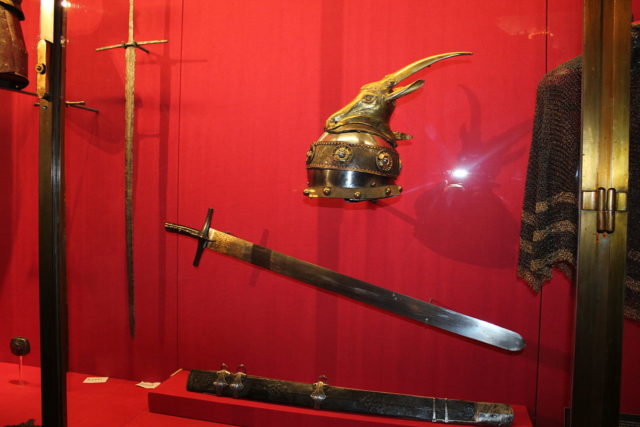
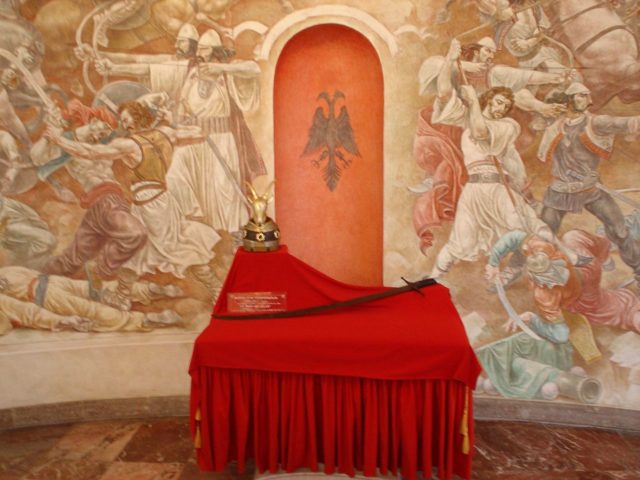
There are many stories about his sword and one of them is that it was so heavy that only Skanderbeg could wield it. According to one of his biographers, Skanderbeg brought a master sword-maker from Italy who made three swords for him. There is a story that one of the swords could cut through steel and it was given as a present to the Ottoman Sultan.
The two remaining swords that can be seen today are the straight sword and the curved sword. It is believed that Skanderbeg used the curved one in times of war, but because he was trained in Turkey, some historians believe that he used the straight golden sword. At the beginning of the 20th century, the Albanian writer Faik Konica saw the straight sword and claimed that there were still stains of blood on the blade.
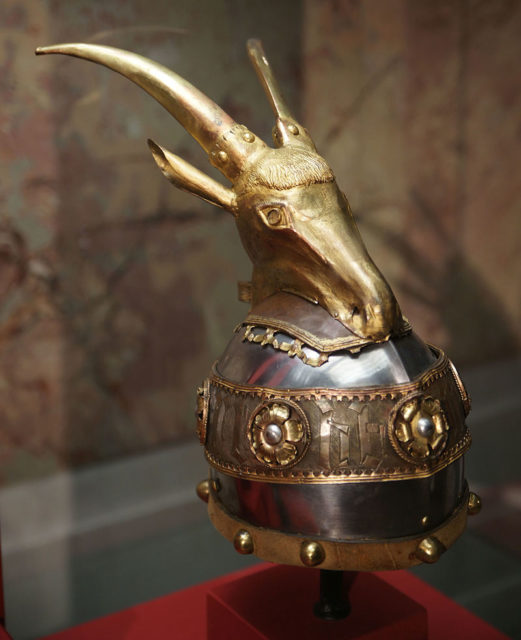
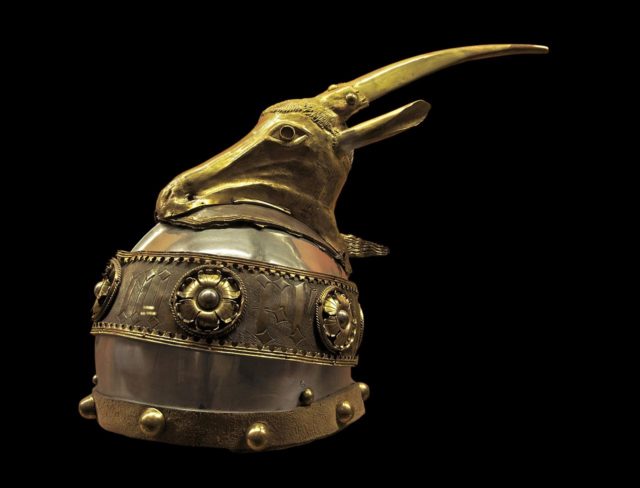
In 1928, when Albania became a kingdom, the helmet of Skanderbeg was adopted as the national royal crown. The helmet is beautifully made of white metal and has a strip dressed in gold. The most remarkable part is the golden horned goat which lies on the top of the head.
According to Wikipedia, on the bottom part there is a monogram separated by rosettes: *IN * PE * RA * TO * RE * BT, which translates as Jesus Nazarene Blesses Thee, Prince of Mat, King of Albania, Terror of the Ottomans, King of Epirus. Skanderbeg always held the title of Lord of Albania, so there is a possibility that the inscriptions on the helmet were written by his descendants.
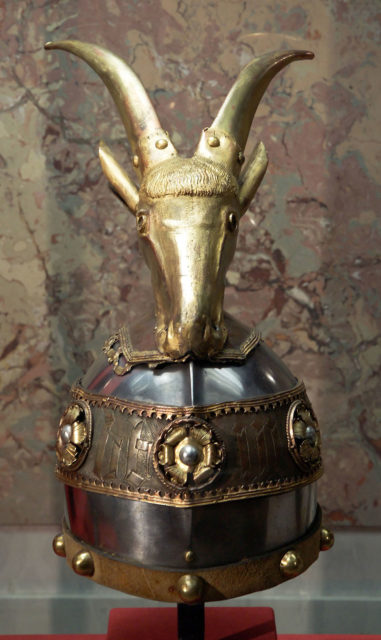
The history of the remaining belongings of Skanderbeg is very confusing. After his death, his wife took refuge in Italy, bringing with her the helmet. It is unknown who owned the belongings after her death. The weapons resurfaced again in the 16th century when, during that period, the helmet and one of the swords were owned by Count Eolfang and the other sword was in the Arms Museum of Archduke Karl of Styria.
The weapons were brought together under the same roof by Archduke Ferdinand of Tyrol. They were brought to Vienna in 1806 and were separated again by the curators of the museum. Finally, they were brought together on the same display at Skanderbeg’s 500th anniversary, shown in the Neue Berg Collection of Arms and Armour in Vienna. As part of the 100th Anniversary of the Independence of Albania, the arms were finally returned to Albania in November 2012.
